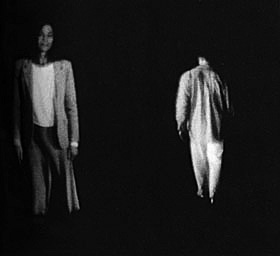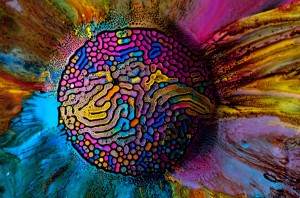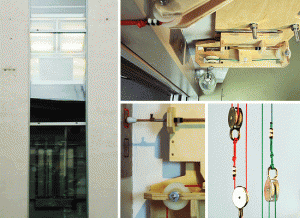// Pushing people away and bringing them together //
Robotic Spider Dress
(http://www.fashioningtech.com/profiles/blogs/robotic-couture)
I was drawn to this dress the instant I saw it; I’m fascinated by spiders, and I’m also interested in biomimicry in design. Spiders have such a compelling and elegant way of moving — even if it does creep some people out — and the idea of being able to infuse our own bodies with some of that haunting grace through robotics is highly attractive. When I read the associated article and the artists (albeit brief) thoughts about “themes of ‘personal space’ […] control and privacy” I became even more intrigued. One of the most powerful aspects of art—regardless of medium—is its ability to deeply attract and repulse an audience on a purely visceral level. This piece takes that concept and physically manifests it, actually luring in people and then pushing them away again.
My biggest regret with this piece is that the video does very little to capture the functionality of the dress. It’s so focused on clichéd editing that one can’t really witness the dress luring or attacking anybody, and so it’s difficult to make a final judgment about how well the dress achieves its artistic vision. All in all, I’d have to say I deeply admire this piece purely based on aesthetics, but am also very disappointed, possibly owing purely to poor documentation.
21 Balançoires (21 Swings)
And so, we move from a piece that focuses on isolation and personal boundaries, to a piece whose primary aim is to bring together all sorts of people in the name of music. Somehow, I wasn’t expecting a whole lot from the idea of ‘musical swings’; I think I’d seen enough repetitions of the ‘musical staircase’ concept to become jaded, and, typically, I’ve found that auditory art installations seem to produce random noise more often than pleasant compositions.
The melodies and harmonies created by these swings–while repetitive–are beautiful and deeply textured. Add to that the activity of swinging. Swinging is a children’s pastime for all ages. Swing-sets have the power to draw in everybody: little kids, elderly couples looking for a place to rest, otherwise apathetic teens who need a place to loiter. People compete to see who can swing higher. People push each other on swings. People interact with swings—and with each other around swings— in a much deeper way than they do with staircases.
It’s also a clean and compelling video. Count me impressed.
Les Belles Infidèles
(http://www.turbulence.org/Works/belles/)
The concept of this last work is one that I have adored for ages: exploring what details, nuances and feelings are lost in the translation of stories from one language to another. Bear with me while I share a few anecdotes. 1) My father, who is German, didn’t take well to the (objectively amazing) rendering of Gollum in the Lord of the Rings trilogy, because when he’d read the books as a child in German, the presence of the article ‘Das’ in front of the name ‘Gollum’ was enough to make him picture an entirely different creature. 2) In high school I accidentally wound up with a British translation of Crime and Punishment while the rest of my English class read from an American translation, and the number of very significant stylistic changes more-or-less blew my mind. Same thing happened when I read ‘The Little Prince’ in French and then again in English.
As the text changes, so does the experience.
This application is deceptively simple, and aesthetically horrid. But the content it contains is amazing. By taking the same story and allowing it to be translated in and out of the same language several times over, you end up with different grammatical structures, narrative structures, and imagery. I admire this application, bare-bones as it is, for making it so easy to see the ‘translational metamorphoses’ in action.



